Close your eyes for a moment and picture yourself standing on a cobblestone square, surrounded by golden façades shimmering under the morning sun. The scent of freshly baked waffles drifts through the air, blending with the rich aroma of chocolate from a nearby shop. You hear the sound of church bells echoing across medieval rooftops while people cycle past with ease, heading to markets, cafés, and universities that have existed for centuries. This is Belgium—a country that effortlessly mixes history, charm, and modern life in ways that make every step of your journey feel like a story unfolding.
When you think about Belgium travel, Brussels and Bruges probably come to mind first. Yet, beyond these famous cities, you’ll discover hidden villages, rolling green valleys, river cruises that whisper tales of the past, and a culinary tradition that could rival any nation in Europe. In 2025, Belgium is more prepared than ever to welcome travelers like you—thanks to sustainable initiatives, improved digital infrastructure, and a renewed focus on making tourism authentic and meaningful.
This Belgium Travel Guide 2025 is designed to give you everything you need: the best cities to explore, hidden gems worth your time, practical tips to make your trip seamless, and itineraries tailored for different lengths of stay. By the end, you’ll feel ready to design an adventure that’s uniquely yours.
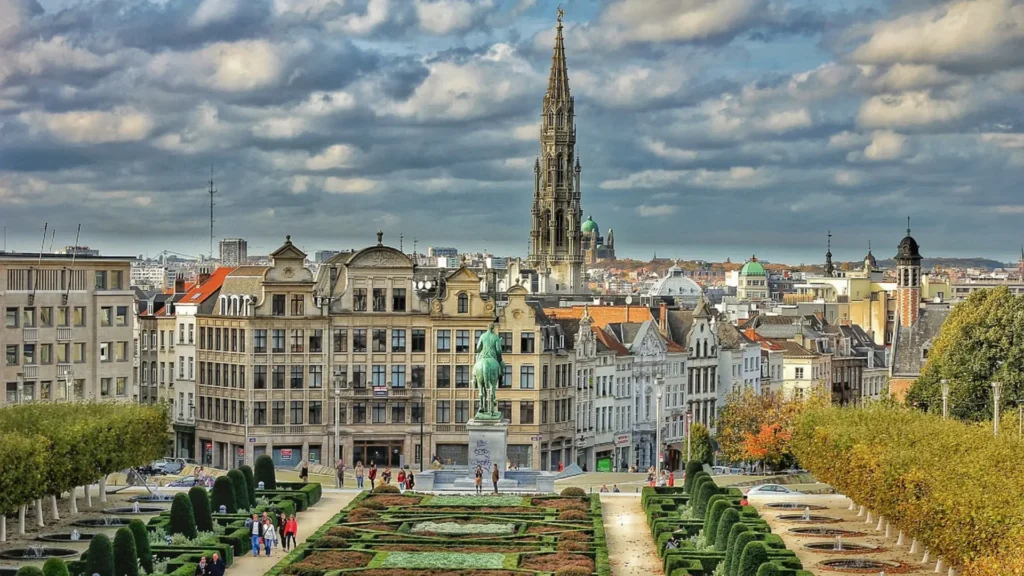
Table of Contents
Why Choose Belgium Travel in 2025?
If you’re still deciding where your next European journey should take you, Belgium offers a rare mix of convenience, culture, and comfort. In 2025, this small yet captivating country stands out in several ways.
Central Location in Europe
Belgium sits at the heart of Western Europe. With direct train connections to France, the Netherlands, Germany, and even the UK, you can use Belgium as both a destination and a gateway. Imagine sipping coffee in Brussels one morning, taking a short train to Paris by lunch, and being back in Ghent for dinner—it’s that well connected.
Sustainable Travel Initiatives
Belgium has invested heavily in eco-friendly tourism. From electric buses in Brussels to expanded bike-sharing networks in Ghent and Antwerp, you’ll find it easier than ever to reduce your footprint while exploring. Even smaller towns like Leuven and Bruges are pushing forward with car-free zones and green transport options.
Digital-Friendly Travel
You no longer need to fumble through paper maps or struggle with language barriers. In 2025, Belgium’s transport apps, museum e-tickets, and digital passes allow you to plan, book, and explore seamlessly. Whether it’s buying train tickets via SNCB/NMBS or downloading city passes straight to your phone, convenience is built into your experience.
Belgium Compared to Other European Destinations
| Destination | Why Visit in 2025 | Unique Factor |
|---|---|---|
| Belgium | Sustainability, food culture, central location | Chocolate, beer, medieval towns |
| France | Fashion, romance, world-class museums | Paris + Riviera glamour |
| Netherlands | Modern cities, tulips, cycling culture | Canals & artistic heritage |
| Germany | Historic castles, Oktoberfest, efficiency | Rich regional diversity |
Belgium may not always be the loudest in advertising itself, but that’s exactly the point: you won’t find overwhelming crowds in every corner, yet you’ll still get world-class culture, cuisine, and unforgettable scenery.
Best Cities to Visit in Belgium in 2025
Belgium is more than just Brussels and Bruges—it’s a collection of vibrant cities, each with its own personality. Whether you’re a foodie, a history enthusiast, or simply someone who loves wandering through charming streets, you’ll find a city that feels like it was made just for you.
Brussels – The Capital of Europe
Brussels is not just the capital of Belgium but also the de facto capital of the European Union. That alone makes it worth visiting—you’ll walk among diplomats, policymakers, and professionals who shape Europe’s future. But Brussels has so much more to offer than politics.
- Grand Place: A UNESCO World Heritage site, this square will leave you speechless with its ornate guildhalls. Visit at night when it’s beautifully illuminated.
- Atomium: This futuristic structure, originally built for Expo 58, offers panoramic views of the city.
- European Quarter: Wander through EU institutions and learn about the continent’s politics.
- Food highlights: Brussels is where you should indulge in waffles, frites with sauces you’ve never tried before, and pralines from world-class chocolatiers like Neuhaus and Pierre Marcolini.
Bruges – The Fairy-Tale Medieval City
If you’ve ever wanted to step into a storybook, Bruges is where your dream comes alive. Known as the “Venice of the North,” its canals and cobblestone streets make it one of Europe’s most romantic cities.
- Belfry Tower: Climb the 366 steps for a breathtaking view of the Markt Square.
- Canal tours: Float past medieval houses and bridges on a scenic boat ride.
- Chocolate museums: Bruges takes pride in its chocolate heritage—don’t leave without tasting locally made pralines.
Bruges is especially magical in winter when its Christmas markets light up the city with festive cheer.
Ghent – The Underrated Gem
Ghent may not be as famous as Bruges, but many travelers find it even more captivating. It blends medieval architecture with youthful energy, thanks to its large student population.
- Gravensteen Castle: A medieval fortress right in the city center.
- Canal views: Streets like Graslei and Korenlei offer some of the most picturesque waterfronts in Belgium.
- Street art: Unlike Bruges’ polished charm, Ghent embraces a cool, creative vibe with murals and modern art spaces.
If you enjoy places that feel alive and authentic rather than overly touristy, Ghent is your city.
Antwerp – Fashion and Diamond Capital
Antwerp is bold, creative, and fast-paced. It’s Belgium’s trendiest city and a hub for both luxury and modern art.
- Diamond District: Antwerp has been the world’s diamond capital for centuries. Even if you’re not buying, it’s fascinating to explore.
- Fashion scene: Home to the famous Antwerp Six, this city is where high fashion meets street style.
- Museum aan de Stroom (MAS): This striking museum tells Antwerp’s story and offers rooftop views.
Antwerp balances its reputation as a financial hub with a vibrant nightlife and arts scene.
Leuven – A Hidden Academic Treasure
Often overlooked, Leuven is a city where history and youth collide. Home to one of Europe’s oldest universities, it has a lively yet laid-back atmosphere.
- University Library & Tower: A symbol of resilience, rebuilt after World War I.
- Beer culture: Leuven is the headquarters of AB InBev, the world’s largest brewer, but you’ll also find countless smaller bars and breweries.
- Old Market Square: Known as the “longest bar in the world,” it’s lined with cafés and pubs where you can enjoy Belgian hospitality at its finest.
Leuven gives you a taste of authentic Belgian student life mixed with rich history, making it an ideal stop on your journey.
Hidden Gems in Belgium You Shouldn’t Miss
When you plan your Belgium travel in 2025, it’s easy to get caught up in Brussels, Bruges, and Antwerp. But if you want to uncover the soul of Belgium, you need to step beyond the popular cities and wander into the country’s lesser-known corners. These hidden gems are where Belgium reveals its most authentic stories.
Dinant – Riverside Charm
Nestled along the River Meuse, Dinant looks like a scene from a painting. Towering cliffs rise dramatically behind colorful riverside houses, with the Citadel of Dinant perched proudly on top. You can take a cable car or climb the steep steps for sweeping views of the valley below.
Dinant is also the birthplace of Adolphe Sax, the inventor of the saxophone. Throughout the town, you’ll spot saxophone sculptures paying tribute to this musical legacy. Add in river cruises, limestone caves, and stunning countryside, and you’ve got a destination that feels far removed from city chaos.
Why visit Dinant in 2025?
- Easy day trip from Brussels (under 2 hours by train).
- Perfect mix of history, music, and natural beauty.
- Smaller crowds compared to major Belgian cities.
Durbuy – The World’s Smallest City
With just a few thousand residents, Durbuy proudly calls itself the smallest city in the world. Stroll through its medieval streets and you’ll quickly see why travelers fall in love with it. The cobblestone alleys, stone houses, and intimate squares feel like stepping back into another era.
Beyond the charm, Durbuy is surrounded by lush Ardennes countryside, offering opportunities for hiking, kayaking, and rock climbing. If you’re someone who craves both culture and outdoor adventure, this is your spot.
Highlights in Durbuy
- Topiary Park: hundreds of carefully shaped bushes and hedges.
- Boutique shops and artisanal restaurants.
- Outdoor activities for adrenaline seekers.
Tournai – Belgium’s Oldest City
Tournai, located near the French border, is often overshadowed by bigger names. Yet, it holds the title of Belgium’s oldest city, with roots stretching back more than 2,000 years.
The centerpiece here is the Notre-Dame Cathedral, a UNESCO World Heritage Site with five towers dominating the skyline. You’ll also find Belgium’s oldest belfry, charming museums, and quiet streets that let you experience authentic Belgian life without tourist crowds.
Insider tip: Tournai makes an excellent stop if you’re traveling between Lille (France) and Brussels.
Ardennes – Belgium’s Nature Escape
If you thought Belgium was all medieval towns and waffles, think again. The Ardennes region will surprise you with rolling hills, dense forests, and sparkling rivers. It’s a paradise for nature lovers and a chance to experience Belgium’s outdoors at its finest.
Popular activities include:
- Hiking and cycling: endless trails through forests and valleys.
- Castle exploring: Château de Bouillon is a must-see.
- Wildlife spotting: deer, wild boar, and birds of prey.
Whether you want a quiet escape or an adventurous trip, the Ardennes offer a refreshing contrast to Belgium’s urban charm.
Essential Belgium Travel Tips for 2025
Traveling to Belgium is straightforward, but a few smart tips will make your experience smoother, cheaper, and far more enjoyable.
Transportation in Belgium
Belgium is compact, which makes getting around incredibly convenient.
- Trains: The SNCB/NMBS train network connects all major cities and many small towns. A journey from Brussels to Bruges takes under an hour.
- Bikes: Belgium’s flat landscape and strong cycling culture make biking ideal, especially in Ghent, Bruges, and Leuven.
- Public transport passes: Look into daily or weekend passes for cheaper travel.
- Ride-sharing & e-scooters: Apps like Lime and Bolt are widely available in larger cities.
Pro tip: If you plan multiple city trips, consider a Rail Pass—valid for 10 journeys anywhere in Belgium.
Food & Drink You Must Try
One of the highlights of your Belgium travel will be indulging in its food culture. Belgian cuisine is hearty, flavorful, and full of surprises.
Dishes to try:
- Moules-frites: Mussels cooked in white wine, garlic, or cream, served with fries.
- Carbonnade flamande: A beef stew slow-cooked in dark beer.
- Stoofvlees: Similar to carbonnade, but slightly sweeter.
- Waffles: Brussels waffles (light, rectangular) vs. Liège waffles (sweet, dense).
Drinks to savor:
- Belgian beer: Try Trappist beers brewed by monks (Chimay, Orval, Westmalle).
- Craft breweries: New-wave beer makers in Brussels and Antwerp.
- Hot chocolate: Best enjoyed in winter at artisan chocolatiers.
Best Time to Visit Belgium in 2025
Belgium is a year-round destination, but the experience changes with the seasons.
| Season | Why Visit | Highlights |
|---|---|---|
| Spring (Apr–May) | Mild weather, flowers bloom | Floralia Brussels, fewer tourists |
| Summer (Jun–Aug) | Lively festivals, long days | Gentse Feesten, open-air dining |
| Autumn (Sep–Oct) | Golden leaves, cozy vibes | Harvest season, fewer crowds |
| Winter (Dec) | Magical Christmas markets | Bruges & Brussels festive lights |
If you want to avoid peak prices but still enjoy good weather, late spring and early autumn are ideal.
Belgium Travel on a Budget
Belgium doesn’t have to be expensive if you plan smartly.
- City passes: Brussels Card, Bruges City Card, and Antwerp City Card include free transport + discounts.
- Street food: Grab frites, waffles, and sandwiches from local vendors.
- Budget accommodation: Hostels and boutique guesthouses are plentiful.
- Free attractions: Many churches, city squares, and festivals are free to enjoy.
Money-saving tip: Museums across Belgium are free on the first Wednesday of every month.
Suggested Belgium Travel Itineraries 2025
Planning your trip can feel overwhelming with so many options. To make it easier, here are some tried-and-tested itineraries that balance culture, food, and relaxation.
3-Day Belgium Itinerary
If you only have a long weekend, this plan covers the highlights:
- Day 1: Brussels
- Morning: Grand Place & Manneken Pis.
- Afternoon: Atomium & Royal Palace.
- Evening: Belgian waffles + dinner at a traditional brasserie.
- Day 2: Bruges
- Explore Markt Square and Belfry Tower.
- Boat ride along the canals.
- End with Belgian beer tasting.
- Day 3: Ghent
- Visit Gravensteen Castle.
- Stroll Graslei & Korenlei.
- Evening train back to Brussels.
7-Day Belgium Itinerary
For a week in Belgium, you can dive deeper:
- Day 1–2: Brussels (museums, European Quarter, nightlife).
- Day 3: Bruges (medieval city charm).
- Day 4: Ghent (student city with great food).
- Day 5: Antwerp (diamonds + fashion).
- Day 6: Dinant (riverside charm + citadel views).
- Day 7: Leuven (beer culture + university heritage).
10-Day Belgium Itinerary
This plan mixes famous cities with hidden gems and nature.
- Days 1–2: Brussels.
- Day 3: Bruges.
- Day 4: Ghent.
- Day 5: Antwerp.
- Day 6: Leuven.
- Day 7: Dinant.
- Day 8: Durbuy.
- Day 9: Ardennes nature escape.
- Day 10: Tournai + return to Brussels.
By spreading out your trip, you’ll see both the iconic highlights and the quiet, authentic corners of Belgium that most travelers miss.
Practical Information for Belgium Travel in 2025
Before you pack your bags and head off, it’s important to understand the logistics of traveling in Belgium. A smooth trip comes from preparation, and with these details, you’ll avoid common mistakes and maximize your experience.
Entry Requirements for Belgium in 2025
- EU Travelers: If you’re from the EU or Schengen Zone, you can enter Belgium with just your ID card or passport.
- Non-EU Travelers: Citizens from countries like the US, UK, Canada, and Australia can stay up to 90 days visa-free in Belgium and the Schengen Zone.
- ETIAS Authorization: From 2025, non-EU travelers may need ETIAS (European Travel Information and Authorization System) approval before arrival. It’s a quick online application, valid for multiple entries.
Tip: Always check the latest government websites for travel updates before flying.
Currency & Payment
- The currency is the euro (€).
- Credit and debit cards are widely accepted. Contactless payment is the norm in 2025.
- ATMs are easy to find, but some small cafés may prefer cash.
- Tipping isn’t obligatory—service charges are usually included, though rounding up is appreciated.
Language in Belgium
Belgium is a multilingual country, divided into three main regions:
- Flanders (north): Dutch-speaking.
- Wallonia (south): French-speaking.
- East Cantons (east): German-speaking.
Most Belgians also speak excellent English, especially in tourist areas, so you’ll have no trouble communicating.
Safety Tips
Belgium is generally safe, but as with any country, stay alert.
- Pickpocketing can occur in crowded areas (e.g., Brussels Central Station, tourist squares).
- Public transport is reliable, but keep an eye on your belongings.
- Nightlife districts are lively and safe, but it’s always best to stick to well-lit streets.
- Emergency number: 112 (works across Europe).
Useful Apps for Belgium Travel 2025
- SNCB/NMBS: Train schedules and e-tickets.
- STIB/MIVB: Public transport in Brussels.
- De Lijn: Buses and trams in Flanders.
- Too Good To Go: Save money by picking up leftover meals from bakeries and restaurants.
- Google Maps & Citymapper: For easy navigation.
Conclusion:
Travel is about more than ticking places off a list—it’s about connection. Belgium, with its medieval towns, innovative cities, and peaceful countryside, offers that connection at every corner. You’ll connect with history as you walk centuries-old streets, with culture as you sip a Trappist beer in a lively bar, and with people who are proud to share their heritage.
In 2025, Belgium feels like a country rediscovering itself—polished yet authentic, modern yet timeless. You can step into a fairy-tale city one day and hike through unspoiled nature the next. You can indulge in food that comforts and surprises, all while enjoying easy, eco-friendly travel.
FAQ : about Belgium Travel
Is Belgium worth visiting in 2025?
Yes, thanks to sustainable initiatives, cultural richness, and accessible travel.
What is the best time to travel to Belgium?
Depends on your preference: festivals in summer, Christmas markets in winter.
Is Belgium expensive for tourists?
Moderate compared to Western Europe; affordable food and transport options available.
How many days do I need for Belgium travel?
Minimum 3 days for highlights; 7–10 days for deeper exploration.
What are the top foods to try in Belgium?
Waffles, fries, chocolates, mussels, and Belgian beer.


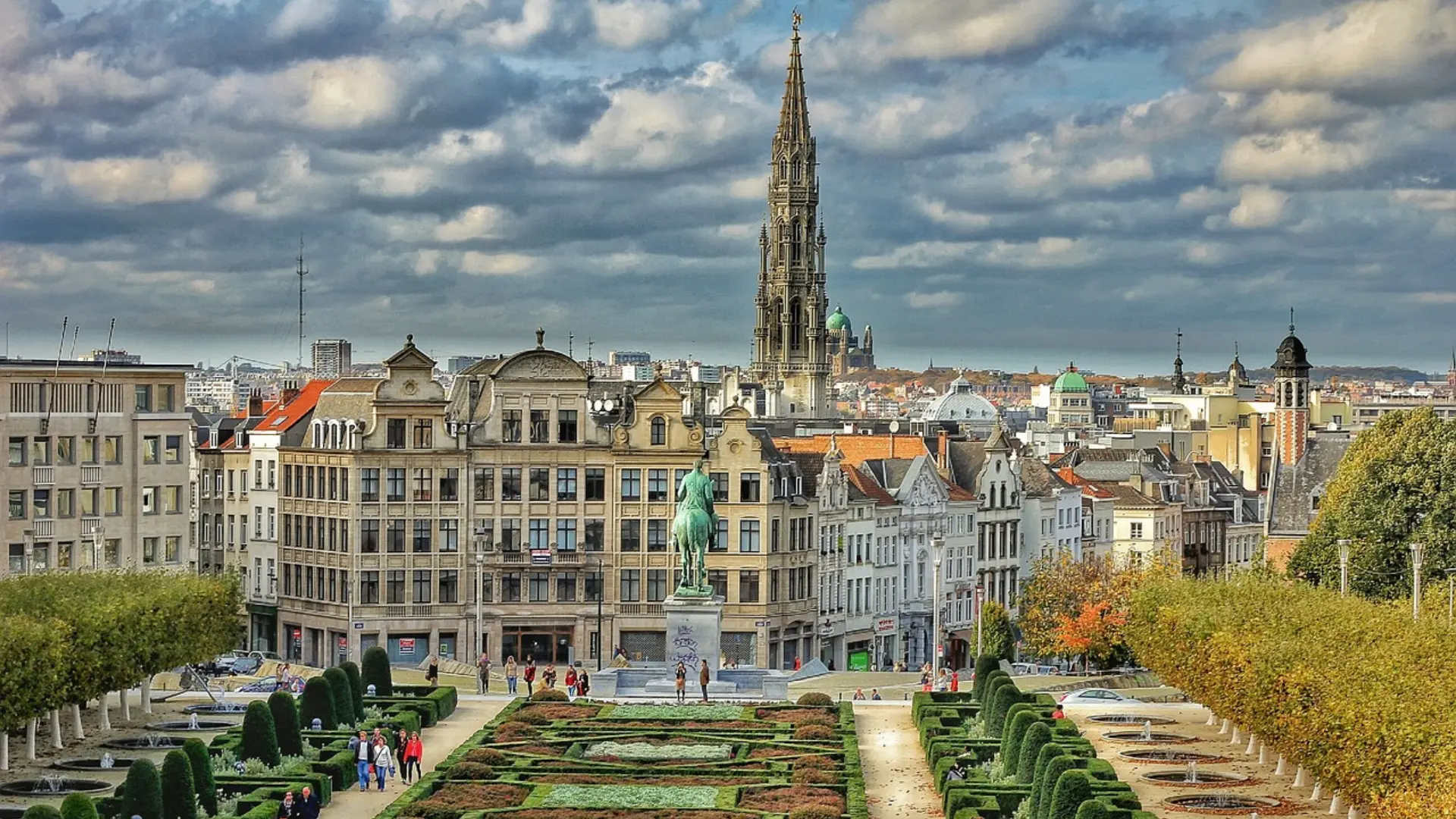

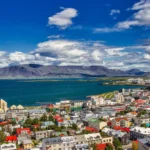
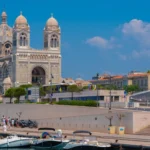
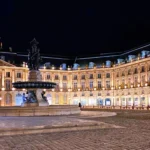

Leave a Reply